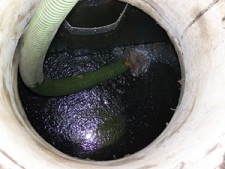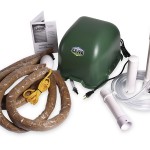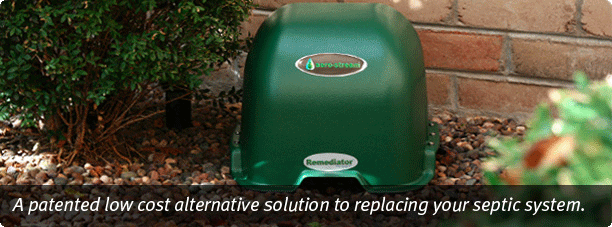Common Septic Tank Problems? The Myths!
While many people are familiar with common septic tank problems such overflows, odors, and back-ups, few people understand what actually causes these problems. In many cases, septic system repairs do not require the replacement of the entire system, although some dishonest plumbers and other professionals may say that they do. Here is an overview of the most common septic system problems, and a brief explanation of how they can be fixed.
 “Roots”
“Roots”
Many septic system experts will tell you that overflow and wastewater in the yard is a result of tree or other plant roots tapping into the septic tank. In reality, “roots” account for only 0.5%, or 1 out of every 200 septic system problems. Roots have to infiltrate every perforation hole in the pipe system in order to cause a problem. Replacing a septic tank because of “roots” is a very costly and unnecessary mistake.
“Frequent Pumping”
If a septic system requires frequent pumping (once a year or more) there is an inherent problem in how the wastewater is being processed by the tank. Usually, when wastewater is not being processed and is backing up either into the yard or the house, it’s indicative that the biomat has developed an anaerobic bacterial sludge. Frequent pumping does not solve this problem, but rather keeps disturbing the organic waste breakdown process by displacing bacteria that would ordinarily  process the wastewater.
process the wastewater.
The more the system is pumped, the less it is able to break down septic waste on its own. Of course, dishonest septic system pumpers will keep pumping in profit without actually fixing the problem.
While septic systems can occasionally benefit from a pump, frequent pumping is not a solution. It’s a tactic that will drain the unlucky victim’s bank account.
“Bugs”
Some repair services offer to inject “special” bacteria cocktails or bugs into the septic system. These mixtures of bacteria are usually composed of facultative and anaerobic bacteria. Aerobic bacteria will break up sludge. However, as soon as the aerobic bacteria enters the tank, it dies because there is no oxygen. The bacteria cocktail can’t break up the septic sludge. To solve the problem and restore the system to working order, septic tanks need an injection of oxygen for the bacteria to function. Aerobic septic systems introduce oxygen into the system and enable the bacteria to break up the sludge.
Common Septic Tank Problems? The TRUTH!

Aero-Stream Septic Remediation
Converting your septic system to an aerobic septic system is the Solutions! By using a septic aeration system, such as Aero-Stream, oxygen can be introduced into the system and break up the sludge by destroying the anaerobic bacteria. An aerobic septic kit is far less expensive than a traditional septic tank replacement, and will lead to a longer life for the septic system. Very few septic systems must be removed or replaced in order to restore the system to proper working order. In most cases, introducing an oxygenated solution via a septic tank aerator will fix septic tank problems in a matter of weeks.
Septic aeration systems work by eliminating the biomat and breaking up harmful sludge that is a byproduct of anaerobic bacteria. This sludge prevents wastewater from being processed efficiently by preventing the bacteria from coming into contact with new organic material. As a result, wastewater builds up and eventually overruns the septic tank and spills out into the yard. Forget the myths. Fixing septic tank problems can be as simple as using an Aero-Stream aerobic septic system kit.
For more information on how to start using Aero-Stream’s aerobic septic system, call us at (877) 254-7093 or fill out our online contact form now. You can also buy our aerobic septic system kit online.


